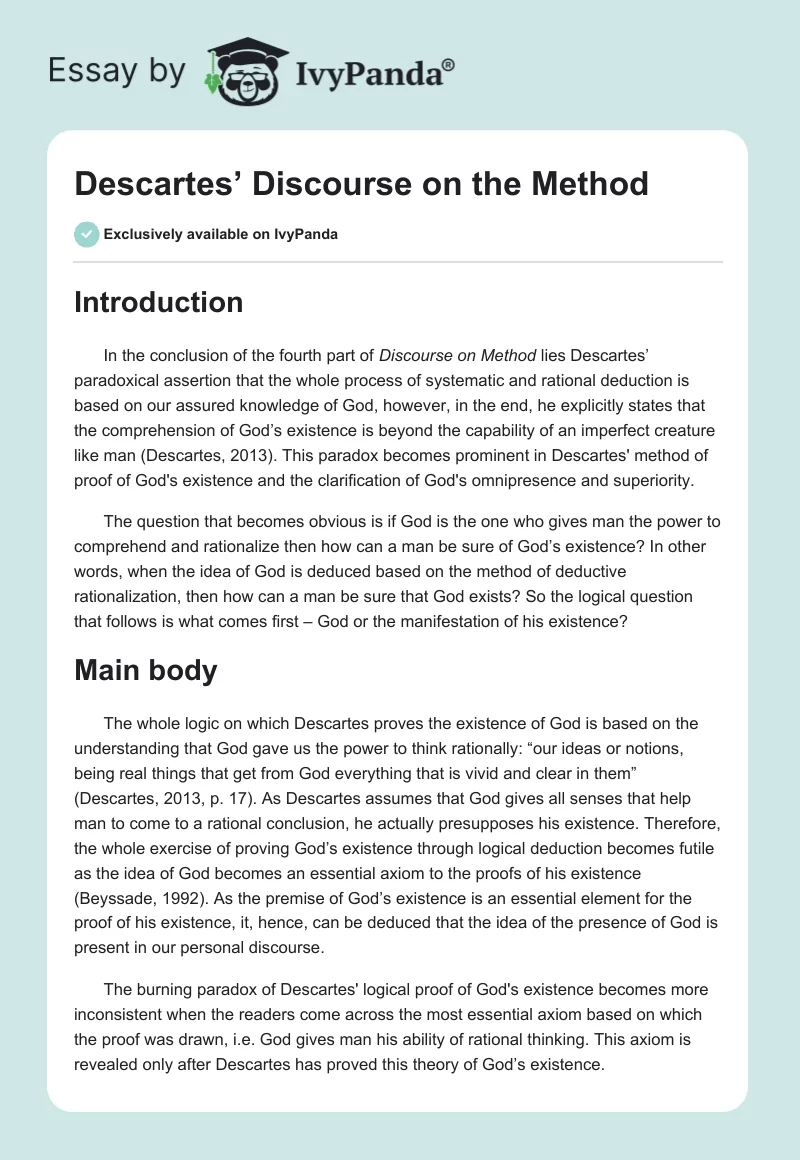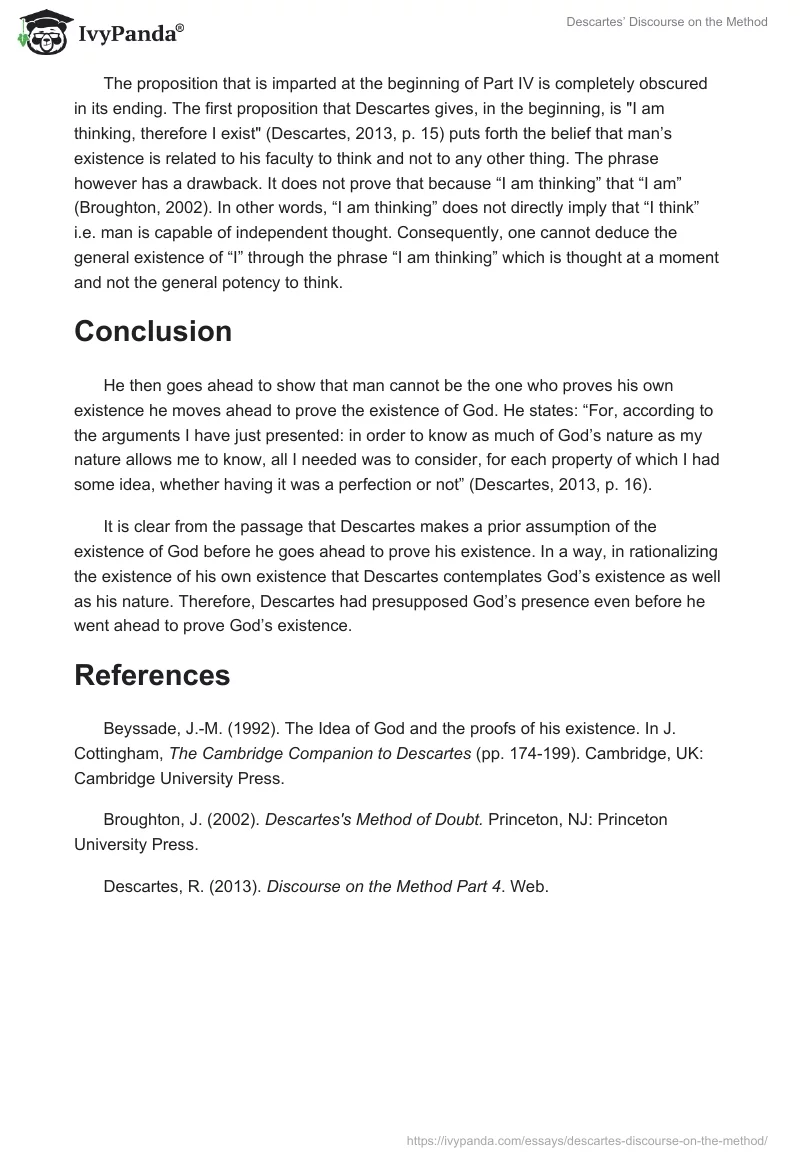Introduction
In the conclusion of the fourth part of Discourse on Method lies Descartes’ paradoxical assertion that the whole process of systematic and rational deduction is based on our assured knowledge of God, however, in the end, he explicitly states that the comprehension of God’s existence is beyond the capability of an imperfect creature like man (Descartes, 2013). This paradox becomes prominent in Descartes’ method of proof of God’s existence and the clarification of God’s omnipresence and superiority.
The question that becomes obvious is if God is the one who gives man the power to comprehend and rationalize then how can a man be sure of God’s existence? In other words, when the idea of God is deduced based on the method of deductive rationalization, then how can a man be sure that God exists? So the logical question that follows is what comes first – God or the manifestation of his existence?
Main body
The whole logic on which Descartes proves the existence of God is based on the understanding that God gave us the power to think rationally: “our ideas or notions, being real things that get from God everything that is vivid and clear in them” (Descartes, 2013, p. 17). As Descartes assumes that God gives all senses that help man to come to a rational conclusion, he actually presupposes his existence. Therefore, the whole exercise of proving God’s existence through logical deduction becomes futile as the idea of God becomes an essential axiom to the proofs of his existence (Beyssade, 1992). As the premise of God’s existence is an essential element for the proof of his existence, it, hence, can be deduced that the idea of the presence of God is present in our personal discourse.
The burning paradox of Descartes’ logical proof of God’s existence becomes more inconsistent when the readers come across the most essential axiom based on which the proof was drawn, i.e. God gives man his ability of rational thinking. This axiom is revealed only after Descartes has proved this theory of God’s existence.
The proposition that is imparted at the beginning of Part IV is completely obscured in its ending. The first proposition that Descartes gives, in the beginning, is “I am thinking, therefore I exist” (Descartes, 2013, p. 15) puts forth the belief that man’s existence is related to his faculty to think and not to any other thing. The phrase however has a drawback. It does not prove that because “I am thinking” that “I am” (Broughton, 2002). In other words, “I am thinking” does not directly imply that “I think” i.e. man is capable of independent thought. Consequently, one cannot deduce the general existence of “I” through the phrase “I am thinking” which is thought at a moment and not the general potency to think.
Conclusion
He then goes ahead to show that man cannot be the one who proves his own existence he moves ahead to prove the existence of God. He states: “For, according to the arguments I have just presented: in order to know as much of God’s nature as my nature allows me to know, all I needed was to consider, for each property of which I had some idea, whether having it was a perfection or not” (Descartes, 2013, p. 16).
It is clear from the passage that Descartes makes a prior assumption of the existence of God before he goes ahead to prove his existence. In a way, in rationalizing the existence of his own existence that Descartes contemplates God’s existence as well as his nature. Therefore, Descartes had presupposed God’s presence even before he went ahead to prove God’s existence.
References
Beyssade, J.-M. (1992). The Idea of God and the proofs of his existence. In J. Cottingham, The Cambridge Companion to Descartes (pp. 174-199). Cambridge, UK: Cambridge University Press.
Broughton, J. (2002). Descartes’s Method of Doubt. Princeton, NJ: Princeton University Press.
Descartes, R. (2013). Discourse on the Method Part 4. Web.


